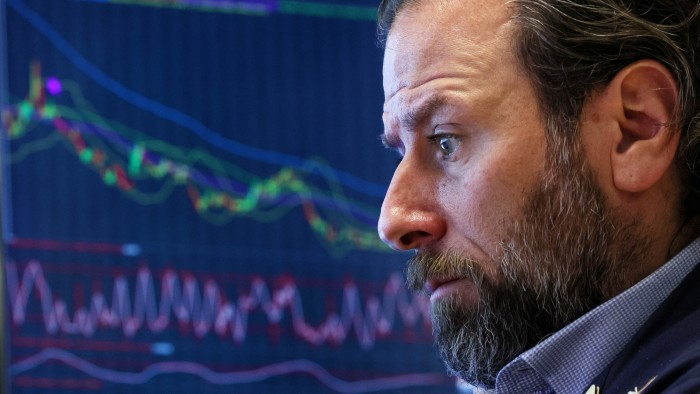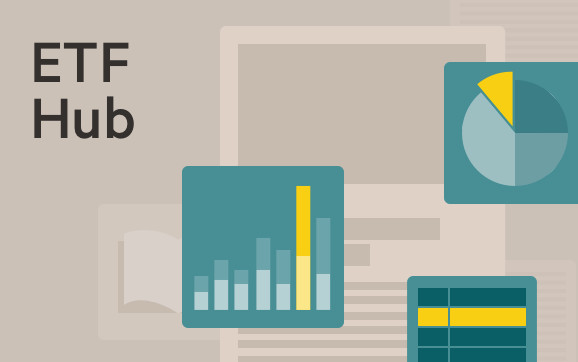US investors shun costly passive ETFs as actives gain ground

Simply sign up to the Exchange traded funds myFT Digest -- delivered directly to your inbox.
Latest news on ETFs
Visit our ETF Hub to find out more and to explore our in-depth data and comparison tools
The rise of active-managed exchange traded funds and the enduring popularity of low-cost ETFs are precipitating an unprecedented squeeze for funds stuck in the middle of these two camps, at least in the US.
The two-pronged attack has weakened flows to the middle ground of ETFs this year. In October, their prospects darkened still further when the mid-market had a net $4bn pulled from it, even as low-cost and active US ETFs sucked in $39bn, according to figures from State Street Global Advisors.
“We haven’t really seen [this squeeze] to this degree [before],” said Matthew Bartolini, head of SPDR Americas research at SSGA.
“Investors have always been price sensitive,” Bartolini added, while at the same time there is “more comfort with having active ETFs in your portfolio. There’s more of them, there is more choice and there are far more products that have an identifiable track record.”
SSGA’s figures suggest that, since 2017, low-cost passive ETFs have averaged 62 per cent of all US ETF flows, active ETFs 12 per cent and the rest (ie more expensive passive ones) 26 per cent.
Its definition of “low-cost” is an internal classification, consisting of “core building blocks” that are cheap relative to the median of their peers. “We are trying to drill into funds where flows are likely to be driven by cost,” Bartolini said.
This year actives had grabbed 28 per cent of all US flows, having broken 2022’s full-year record of $107bn, Bartolini said, representing a “massive market share increase”.
With low-cost passives holding steady at 61 per cent, more expensive passives have been left with just 11 per cent of flows — a far cry from the 45 per cent of US ETF assets, $3.2tn in dollar terms, they account for.
Indeed, in October their share turned negative, with low-cost passive ETFs grabbing a 66 per cent share of total inflows of $35bn, actives 46 per cent and all other ETFs in aggregate minus 12 per cent.
Bartolini said actively managed ETFs were “building momentum”, helped by the ongoing conversion of mutual funds into exchange traded equivalents and derivative-heavy vehicles such as the JPMorgan Equity premium ETF (JEPI) that “are not really active, they are just modifying a risk factor”.
Elisabeth Kashner, director of global fund analytics at FactSet, said year-to-date US ETF flows data was “as we quite often see, populated by cheap core portfolio holdings”, such as the Vanguard S&P 500 ETF (VOO), iShares Core S&P 500 ETF (IVV) and Vanguard Total Bond Market ETF (BND), which each have total expense ratios of just 3 basis points.
Alongside these traditional juggernauts, the iShares 20+ Year Treasury Bond ETF (TLT) has surged in popularity this year, with inflows of $20.9bn taking its assets to $42.2bn — despite its weak performance with year-to-date losses of 8.2 per cent.
“Investors are enjoying shooting themselves in the foot this year with TLT. It has dished out nothing but punishment,” Kashner said.
Despite its chunkier 15bp fee, TLT is still among the 20 per cent of cheapest US ETFs, according to FactSet.
By far the most popular active funds have been JEPI, with net inflows of $12.7bn, and its sister JPMorgan Nasdaq Equity Premium Income ETF (JEPQ), with $5.4bn. Overall, actively managed ETFs have vacuumed up $88bn since the turn of the year.
“There are a lot of forces that are driving interest in JEPI. Some of them are more social, emotional than economic,” said Kashner, given the covered calls fund’s nature as a defensive play on the US stock market.
Based on FactSet’s data, only one of the 20 best-selling ETFs in the US so far this year is a passive fund charging more than TLT’s 15bp: Invesco’s S&P 500 Equal Weight ETF (RSP), which costs 20bp and has taken in $7.2bn, placing it 12th on the list.
Despite this, Bartolini believed the unloved mid-market ETFs could be about to come back into at least some degree of favour as a result of wider market dynamics.
“We have seen a broadening of the [stock market] rally,” away from a handful of big-name stocks, as “risk sentiment has improved,” he said.
Latest news on ETFs

Visit the ETF Hub to find out more and to explore our in-depth data and comparison tools helping you to understand everything from performance to ESG ratings
“Seasonality typically benefits funds that are not these two [extremes of low-cost and active]” given annual tax-loss harvesting and the potential for a Santa Claus rally, Bartolini argued.
Kashner was also unconvinced that passive ETF buyers had suddenly become more price-sensitive and obsessed with only buying the cheapest funds.
Her data show more ETFs raised their fees than lowered them in the first half of 2023, an unusual event that last occurred in 2017 and not one redolent of a frugal investment backdrop.
Referencing Cathie Wood’s high-profile Ark Innovation ETF, Kashner said “people are willing to pay up for ARKK, JEPI etc. There are a lot of investors who are willing to pay above the market rate for something.”
Comments